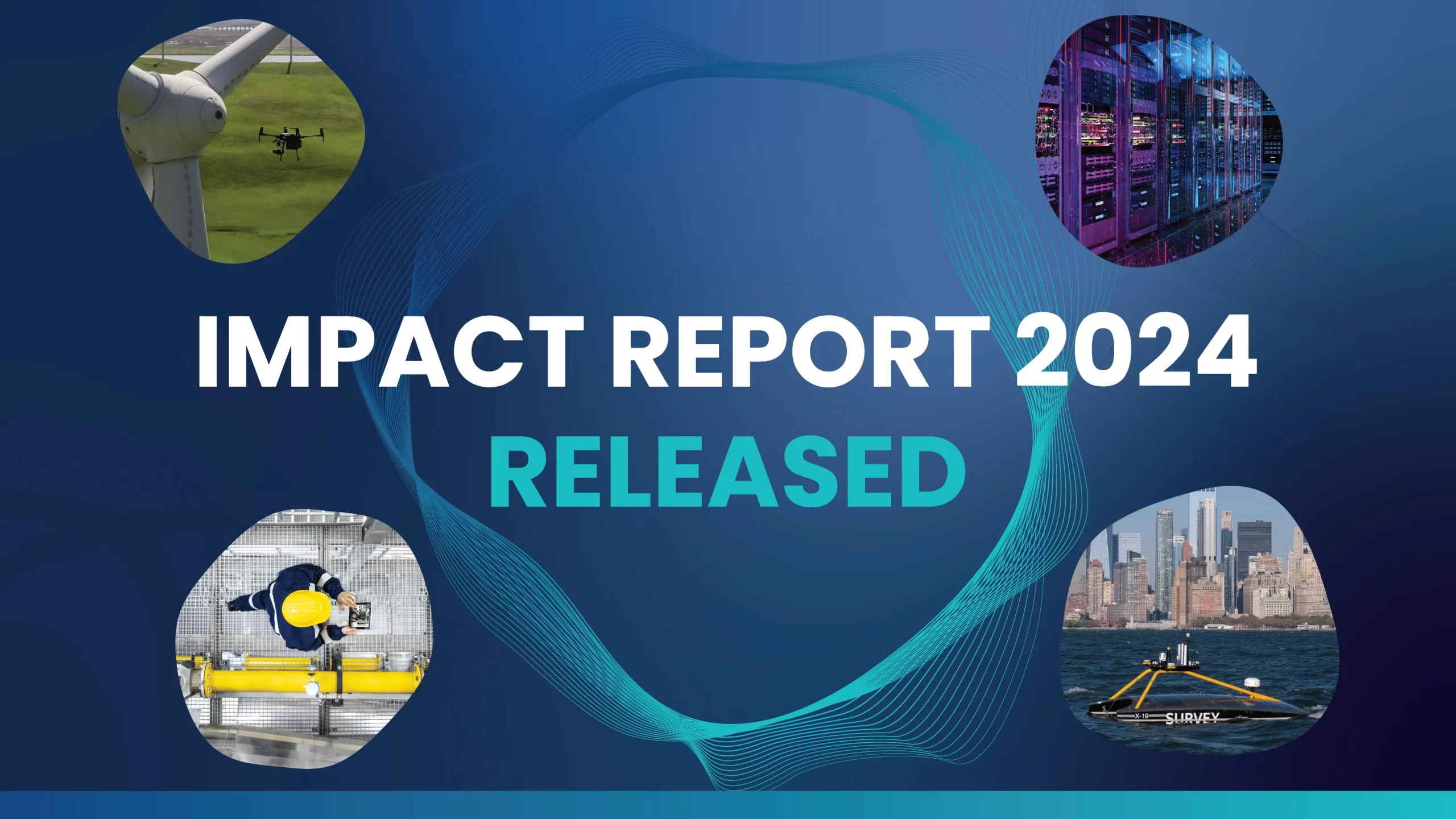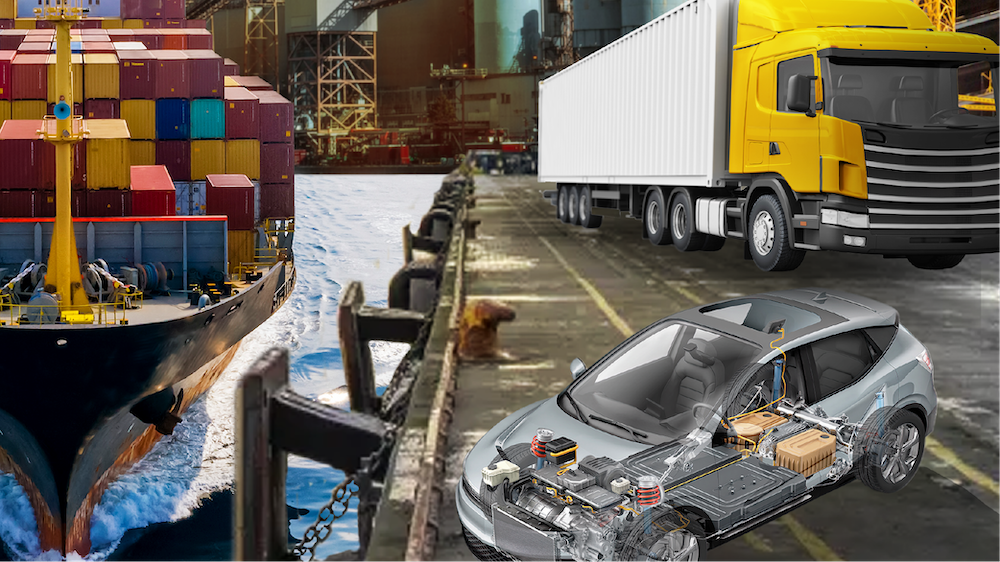

This article is the first in our series on carbon dioxide (CO2) reduction. We will look at why it matters and show how OGCI Climate Investment is investing in and supporting the growth of commercially viable, scalable and impactful solutions that have the potential to drive significant greenhouse gas (GHG) emissions reduction in different sectors of the global economy.

“Climate change is probably the biggest challenge that we will face in our lifetime, and it is absolutely imperative that we start making steps to combat it right now ,” CEO of our portfolio company 75F, Deepinder Singh says. 75F provides an Internet of Things (IoT) based building management system that uses sensors, software, and controls to measure and optimize energy usage, which materially saves both money and CO2 emissions for its customers.
After a hard look at methane emissions in previous series, we now turn our attention to carbon dioxide (CO2) reduction. Like methane, CO2 emissions emanate well beyond the oil and gas industry. CO2 is a particularly stable molecule and it remains in the atmosphere for a long time. CO2 is both generated and absorbed by nature, whether it’s oceans, forests, lakes – a variety of different kinds of ecosystems. Our society has increased the amount that is being emitted to a level where it has not been fully accommodated by natural ecosystems, leading to a surging concentration of CO2 – where CO2 has grown from around 280 parts per million (ppm) pre-industrial revolution to more than 400ppm today. Scientists estimate that through human activity, the Earth has experienced about 1°C of warming since 1850. The world’s efforts are now aimed at trying to keep that warming on average to 1.5°C or at least less than 2°C from the 1850 level.
To address the climate challenge, CO2 and other GHG emissions need to be avoided, reduced, recycled or stored.

Climate change is probably the biggest challenge that we will face in our lifetime, and it is absolutely imperative that we start making steps to combat it right now
Deepinder Singh, 75F CEO
OGCI Climate Investment’s current Portfolio has 12 investments focused on CO2 reduction or avoidance with the objective of delivering the service or the end-product – be it heat or light or transportation – with the same performance but more efficiently or with a lower carbon footprint. Examples include a more efficient engine, or a more efficient process, or operating effectively at lower temperatures. Given the scale of the climate challenge, the world needs both action and scalable innovation to make progress. At OGCI Climate Investment, we are focused on initiatives that can really move the dial on CO2: those that can have at least 1 Mt of CO2e of GHG impact by 2030, but also those where we think our invested capital will be catalytic to maximizing impact. We focus on GHG-intensive, under-invested sectors.
Take buildings – responsible for around 21% of GHG emissions (still more if you consider the impact of their construction), yet climate tech that addresses buildings efficiency has only attracted 4% of venture investment capital over the last seven years, according the State of Climate Tech 2021 report issued by PwC.
Our portfolio company Converge is a technology firm accelerating decarbonization in the construction sector with its intelligence platform fusing physical and construction data. “From OGCI CI, you get all the benefits of the strategic investor, but none of the downsides, because OGCI CI is independent, yet you have access to the deeply technical and scientific membership base,” Converge CEO, Raphael Scheps says. “Also, some of OGCI member companies are key stakeholders in driving decarbonization, and the best way to put it into effect is to work with them, and for them to begin to adopt the technologies.”
Converge sees itself as a digital enabler that helps the construction industry transition to impactful novel construction methodologies and chemistry-based technologies, while giving it confidence in the performance of these materials and also optimizing the selection of these materials at scale. “Even before investing, OGCI CI was critical in helping us understand the impact we are having on the industry,” Scheps says. “First and foremost, it was the chemistry of the team, which had a deeply scientific approach to the problem, and a lot of expertise around decarbonization, and around how to assess and actually measure the impact.”
In transportation, while some areas have attracted a lot of venture capital attention (for example, passenger cars and charging infrastructure), maritime transportation is a sector that has seen relatively limited decarbonization investment to date. Our portfolio company Norsepower shows vividly how wind power and sail technology has evolved into the 21st Century. Norsepower’s streamlined, elegant, and to the observer, simple technology represents the sail reinvented.
Once installed on an appropriate vessel, the rotor sail can harness the power of the wind to drive down the average fuel usage by as much as 25%, therefore reducing the GHG intensity of the vessel. There are 30,000 ships afloat today that are suitable for Norsepower sail installation. We are assisting Norsepower beyond our investment, by facilitating its access to commercial customers in the energy and industrial sectors. In the oil and gas industry, Norsepower presents a significant value-creation opportunity both for the ship owner and to the lessor who benefits from the lower emissions available.
“The entire shipping industry is looking for technologies which enable decarbonization of global maritime transport, and we regard our rotor sail technology as an essential technology to enable this,” Norsepower CEO Tuomas Riski says. “In the long term, ships will need to use alternative fuels, but they will be so expensive that the first step is to minimize the actual fuel consumption, and our available rotor sail technology can reliably minimize the fuel consumption and emissions – now.”

The entire shipping industry is looking for technologies which enable decarbonization of global maritime transport, and our technology can do this
Tuomas Riski, Norsepower CEO
OGCI Climate Investment’s thesis is to prioritize reducing CO2 emissions, but in areas where we can be differentiated or add value, targeting those often over-looked high-emitting sectors rather than the more socially visible areas that, whilst important to re-engineer for emissions reduction, tend to be well capitalized and have lower emissions. Our other priority is urgency.
The world requires an enormous amount of decarbonization effort for a chance to stay anywhere near a 1.5°C trajectory.

The opportunity to partner with OGCI Climate Investment provides the capital and strategic relationships to bring nickel-zinc batteries into new global growth segments.
Tim Hysell, ZincFive CEO
Part of our role is to help companies, entrepreneurs and project developers accelerate their decarbonization. We are mandated to look at the tougher, less visible, under-invested opportunities and try to help solve them. To achieve this, we find existing markets, which are active and viable; we find already-existing emission-reducing innovations, which – when scaled – can disrupt those markets and encourage adoption; and we look at the scale of the potential emission reduction impact, as well as financial and commercial opportunities.
Our portfolio company ZincFive produces nickel-zinc batteries and power solutions. Its CEO and Co-Founder, Tim Hysell, says that the world demands products that are not only sustainable and safe, but also offer superior climate impact, and ZincFive’s battery chemistry ticks those boxes. The market for the batteries in the spaces that ZincFive serves is now over $120bn, and it is expected to double by 2025, he shares. “The opportunity to partner with OGCI Climate Investment provides the capital and strategic relationships to bring nickel-zinc batteries into new global growth segments,” Hysell says. ZincFive’s nickel-zinc batteries operate at lower temperatures, thereby reducing energy consumption and emissions, leading to a lower GHG footprint and lifecycle environmental impact than either lithium or lead-acid batteries can achieve.
For the world to reach its climate goals, we cannot shy away from the technically challenging issues and problems that are facing mankind today. We need to embrace them, leverage the latest science and advanced solutions development in those areas. And we need to do this now in order to try to stay on track towards the 1.5°C temperature goal.
The next article of the series looks at how we approach the construction of our CO2 reduction Investment Portfolio.
Some of the technologies referenced in this series are trademarked by the company in question. All rights reserved.



